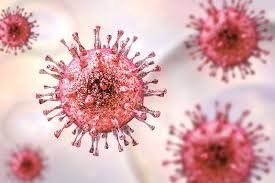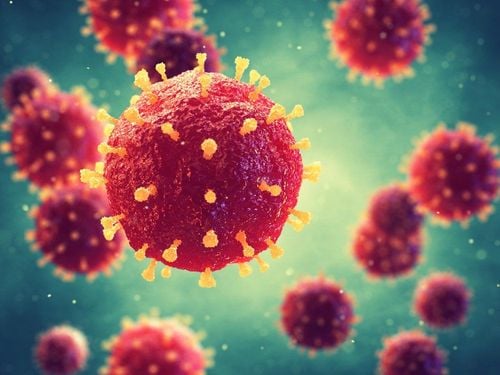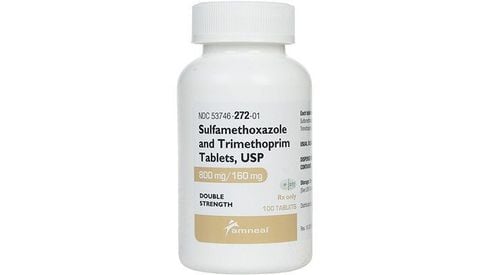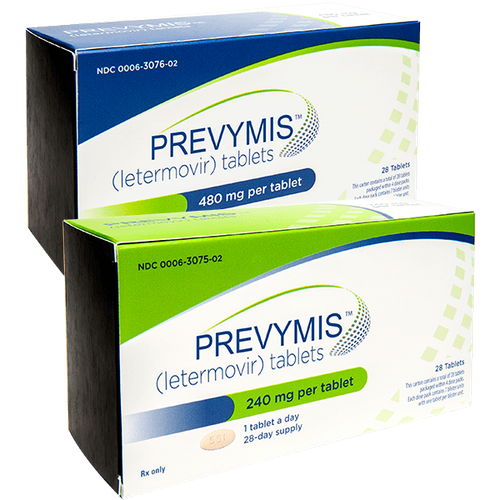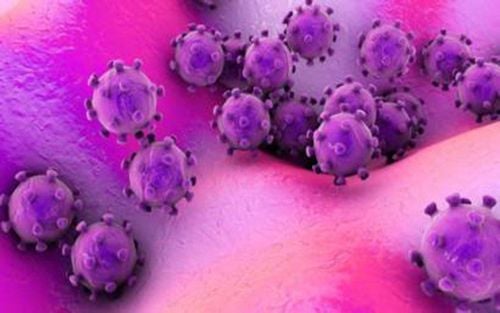This is an automatically translated article.
The article was written by MSc Ma Van Tham - Internal Medicine Doctor, Department of Pediatrics - Neonatology - Vinmec Phu Quoc International General Hospital.
CMV is one of the causes of prolonged pneumonia and severe lung damage, especially in immunocompromised children. This disease can be observed in cases of HIV infection, malignancy, congenital immunodeficiency, organ or bone marrow transplantation.
6. Serological diagnosis
Neutralization, immunofluorescence testing for antibodies is useful in diagnosing congenital but asymptomatic infections. Specific anti-CMV antibodies are IgM and IgG. Antibodies in breast milk do not prevent mother-to-child transmission and limit the severity of the disease. Once infected with CMV, the carrier is IgG positive for life.
7. Lung biopsies, pathological images
Required for the definitive diagnosis of cytomegalovirus pneumonia.
Histopathological image of lung injury with giant alveolar cells with cytoplasmic inclusions and CMV inclusions in the nucleus with a perinuclear light ring creating an owl-like image with a positive CMV PCR test is the gold standard for the diagnosis of CMV pneumonia.
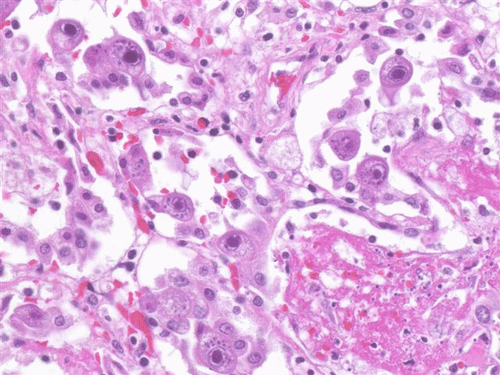
8. Molecular Test
Polymerase chain reaction (PCR).
III. DIAGNOSE
There are signs of pneumonia according to WHO criteria. Based on clinical symptoms, it is not difficult to determine, but mainly based on laboratory tests:
CMV is detected on human fibroblast cultures. Serology and antigen testing. PCR and cytological analysis.
1. Direct diagnosis
CMV is eliminated through saliva, urine, bronchial fluid many months after illness. There are many methods to isolate virus by taking samples and human fibroblasts:
Early fluorescence antigen determination : Cell culture specimens after one night of incubation for reaction with monoclonal antibodies against Cytomegalovirus associated with fluorescence. Determination of leukocyte antigens: Mononuclear cells from peripheral blood are centrifuged and stained with enzyme-linked monoclonal antibodies or fluorescence. Determination of viral DNA: In blood samples, oropharyngeal fluid, and bronchial fluid by PCR amplification. + Chain amplification reaction (PCR): PCR is a common technique in molecular biology to amplify (make multiple copies) a piece of DNA without the use of living organisms such as E. coli or fungi. yeast.
PCR CMV is currently the most valuable method in the diagnosis of CMV infection. Demmler G. J, G. J. Buffone studied that PCR-CMV in urine has a sensitivity of 93% and a specificity of 100% when diagnosing congenital CMV infection.
PCR-CMV is performed on Real-time PCR method, depending on the method of running, the results can tell us whether there is CMV DNA in the patient sample (qualitative) or how many DNA-CMV molecules are present in the sample. in that sample (quantitative), however how much this value is clinically relevant has not been well studied. PCR-CMV will give a positive result when there are >100 copies/mm3 of plasma.
CMV pneumonia with viral load of 5000cospis/ml in non-immunocompromised patients.
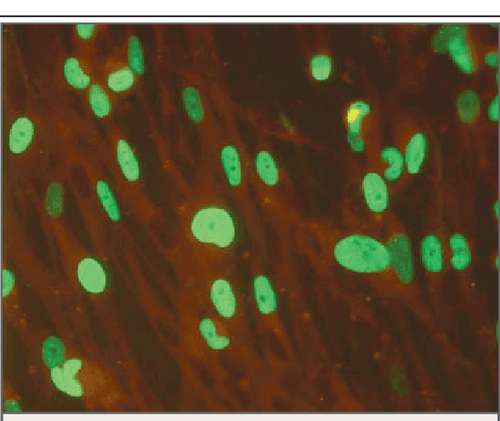
2. Serology-based diagnosis
Various serological techniques are used to determine anti-Cytomegalovirus antibodies in patient serum. Class IgM antibodies were determined by enzyme-linked immunosorbent or immunofluorescence; IgG antibodies are determined by ELISA technique or by passive hemolysis.
3. Differential diagnosis
Pneumonia caused by other viruses. With common bacteria in pneumonia. Fungal pneumonia. P. Carinii pneumonia. Mycobacterial pneumonia.
IV. TREATMENT
Antiviral drugs and other measures:
Improve physical condition, strengthen immunity and fight water and electrolyte disorders. Specific measures are as follows:
+ Increase nutrition
+ Prevent superinfection, diarrhea, electrolyte disturbances
+ Enhance immunity with alternative measures to prevent bacterial infections for people suffering from diseases deficiency disease of IgG and other antibodies.
The starting dose of IGIM (Immune Globulin) is 1.2 ml/kg. Then use a maintenance dose of 0.6 ml/kg (at least 100 mg/kg) every 2 - 4 weeks by injection once; some people may need more injections (shorter intervals). The maximum single dose is 30 - 50 ml for adults and 20 - 30 ml for children and young children.
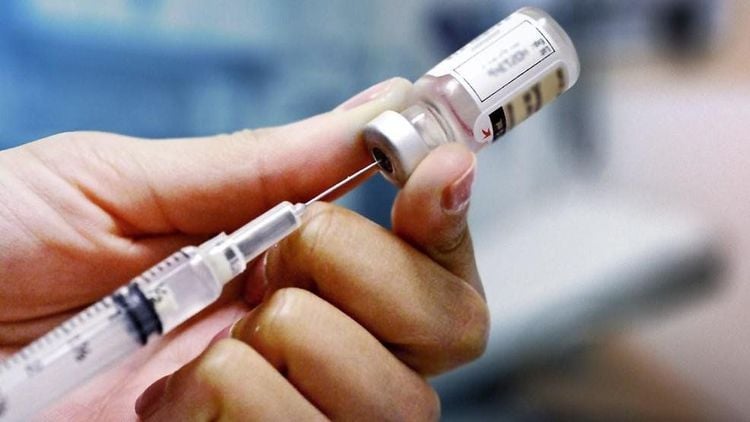
1. Drugs that have been used and studied in the treatment
1.1 Ganciclovir (brand name Cymevene 500mg) The main treatment for CMV pneumonia today is Ganciclovir
Ganciclovir (brand name Cymevene 500mg)
Nature: is a Guanosine derivative with significantly stronger activity against CMV than that of Ganciclovir. The active ingredient in the group is ACYCLOVIR. Ganciclovir is a nucleoside isomer that inhibits DNA synthesis like acyclovir. Difference CMV does not contain a thymidine kinase.
Actions: Ganciclovir is active against CMV, HSV, VZV, HHV-6, HHV-7, HHV-8, but its other isomers are dominant against VZV and Herpes simplex.
Undesirable effects: Clinical toxicity of ganciclovir is fever, rash, diarrhea, haemorrhagic granulocytopenia, anemia (20-25%), thrombocytopenia (6%), leukopenia neutral (5% if oral, 14% if injected).
Neutropenia may appear in the first or second week after treatment with Ganciclovir. Patients with AIDS are at greater risk of neutropenia than other immunocompromised patients. Patients with drug-induced immunosuppression are more likely to develop thrombocytopenia than patients with AIDS. Leukopenia through dose reduction and or additional growth factors.
It is not recommended to start treatment if the neutrophil count is less than 500 cells /ul or Hb is less than 8g/dl
Route - dose: An intravenous infusion is best given orally. have a serum concentration 5-10 times lower than the intravenous route; If injected intramuscularly or subcutaneously, tissue will be severely irritated because of the high pH of ganciclovir (about 11). A slow intravenous infusion should be given at a constant rate for at least 1 hour, with solutions not exceeding 10 mg/ml, and the patient should be adequately hydrated to avoid increased toxicity. Use an infusion device with a membrane filter with a pore size of 0.22 - 5 micrometers. Ganciclovir tablets must be taken with meals.
Slow intravenous infusion over 1 hour: 5 mg/kg/day, once/day, for 7 days/week or 6 mg/kg/day, for 5 days/week. Oral approved for the treatment of retinitis eye 1000 mg, 3 times/day, taken with meals or 500 mg/time, 6 times/day, 3 hours apart, with food.
Monitoring in treatment :
- The clinical condition of the patient to continue or stop treatment.
- Blood count: white blood cells, platelets
* Currently, resistance to Ganciclovir is very low, there have not been many studies on it. Ganciclovir resistance due to mutations UL97, UL54.
1.2 Valganciclovir Valganciclovir Treatment
Valganciclovir is a “prodrug” of Ganciclovir that activates in the intestines and liver for Ganciclovir; Valganciclovir has a bioavailability of 60%. Valganciclovir 900 mg orally once a day is equivalent to once a day intravenously Ganciclovir 5 mg/kg; A meta-analysis showed comparable efficacy between 900 mg valganciclovir and 450 mg in the prophylaxis of CMV infection in organ transplant patients, although a daily dose of 900 mg was associated with an increased risk of CMV infection. 3 times more leukopenia and 2 times increased risk of organ rejection; Valganciclovir is used to treat selected cases of CMV. Most experience is seen in pancreatic and kidney transplant recipients and in HIV/AIDS patients with established CMV retinitis; The drug is also used for primary treatment or universal prophylaxis of CMV; A glomerular filtration rate (GFR) < 10 is a contraindication to valganciclovir use.
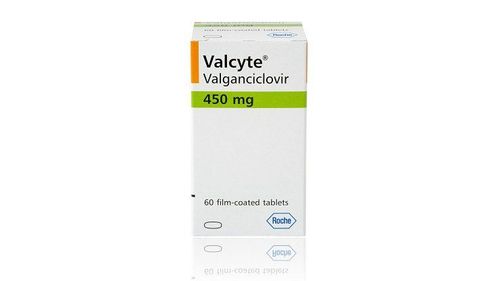
1.3 Foscarnet Nature : Foscarnet(sodium phosphonoformate) is a DNA strand inhibitor of phosphorylation. It is used to treat drug-resistant HSV and viruses that are resistant to ganciclovir. This is an effective antiviral drug;
Caution: On patients with kidney function problems. Small changes in creatinine concentrations require recalculation of the renal clearance. Foscarnet is a nephrotoxic substance, the patient must be hydrated.
Undesirable effects : Foscarnet may cause calcium and phosphorus metabolism. Other adverse effects include nephrotoxicity, anemia, headache, and nausea. The drug can cause a fixed drug reaction on the penis.
Monitoring in treatment
Kidney function. CBC. Foscarnet does not require intracellular phosphorylation. Foscarnet resistance is secondary to mutations of DNA strand synthesis at codon 696-845.
1.4 Cidofovir Cidofovir is a nucleotide DNA replication inhibitor; The drug is effective against many viruses, it is also used to treat difficult-to-treat CMV retinitis in HIV-infected patients; Ganciclovir resistance does not require the use of Cidofovir; The patient must be rehydrated and the drug must be prescribed with probenecid to protect the renal tubules;
Dosage of antiviral drugs in the treatment of CMV infections and diseases
V. PROGRESS AND PROSPECTUS
With the group of immunocompromised patients, CMV causes long-term infection and difficult treatment. High risk of re-infection, repeated infection can cause death in this group of diseases. For patients who are not immunocompromised, after treatment, the child can return to normal. Prognosis is good in this group of patients.

BECAUSE. PREVENTION
Currently there is no vaccine to prevent CMV in humans. The studies are new to phase 2, which uses animal testing.
Careful screening of blood before transfusion, screening of bone marrow for transplanted organs before putting them into recipients.
Children with giant cell inclusion disease that excrete the virus in their urine must be isolated from other children.
CMV - injectable immune globulin can be used to limit infections during organ transplantation or to prevent infection in babies whose mothers have primary CMV infection during pregnancy. Acyclovir or valacyclovir may reduce CMV infection in transplant recipients. Prophylaxis for immunocompromised children due to causes of CMV infection as shown in the table in the treatment section above.
CONCLUSION
The rate of CMV infection in the world is quite high. Most of them do not show clinical symptoms in healthy people, but CMV is the cause of severe pneumonia in children If not treated. Good patients have a high risk of death, especially in immunocompromised children, and also those who do not belong to this group. Clinical diagnosis is difficult to distinguish from other types of etiology, mainly diagnosed definitively. determined by tests, PCR, oropharyngeal, bronchial, and pathologic cultures. However, there are many studies showing that symptoms of cough and wheezing persist for more than 1 week, antibiotic treatment or other methods. If the other phase does not progress, accompanied by signs of liver, spleen enlargement, jaundice, it is possible to treat in the direction of CMV and do diagnostic tests to confirm CMV.
Vinmec International General Hospital is one of the hospitals that not only ensures professional quality with a team of leading medical doctors, a system of modern equipment and technology. The hospital provides comprehensive and professional medical examination, consultation and treatment services, with a civilized, polite, safe and sterile medical examination and treatment space. Customers when choosing to perform tests here can be completely assured of the accuracy of test results.
Please dial HOTLINE for more information or register for an appointment HERE. Download MyVinmec app to make appointments faster and to manage your bookings easily.





